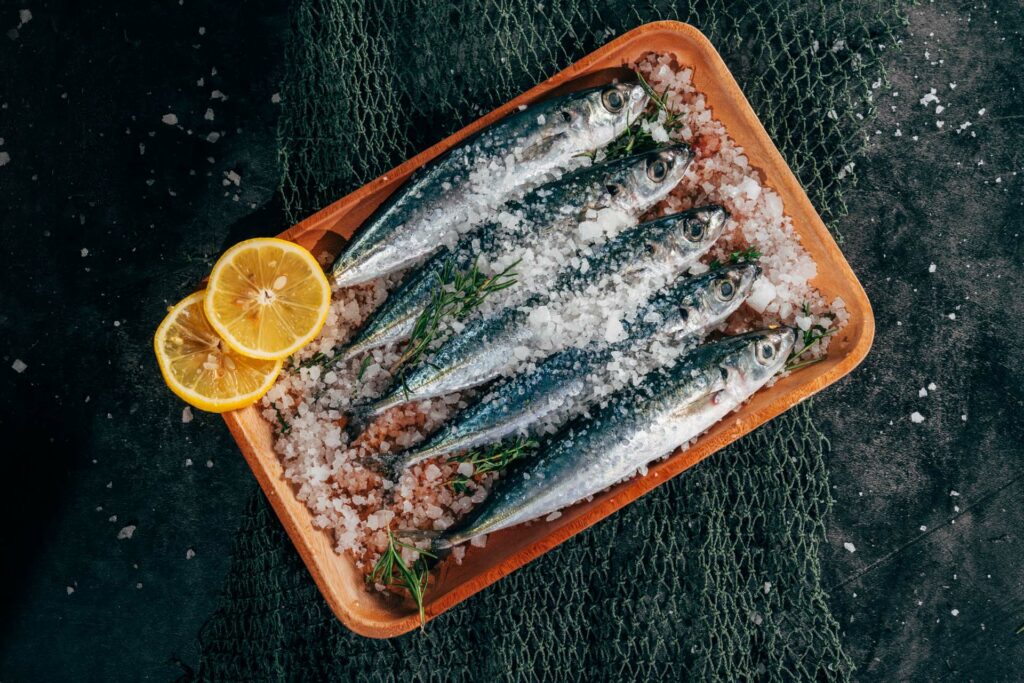Salt makes our food sing by enhancing flavor. It serves as the lead singer in our spice cabinet, making its presence an absolute necessity. Without the Va Va Voom, our food would be bland and tasteless. It also serves as a great counterpart to sour, and bitter flavors. It enhances sweetness and tones down the pungent flavor, acidity and bitterness. Yup, that’s why it’s so damn good on a gooey brownie. It’s one of the key components in achieving Umami.
There’s a vast variety of salts, and they have different uses. Salts offer different textures, some crunchy, others are moist and salty. I’m not going to bore you with an encyclopedia of salts, but I do think it’s important to review the top 5 essential salts you need in your kitchen.
Let’s get into them, shall we?!
5 Essential Salts
Sea Salt
Sea Salt is created from evaporated seawater. It has a natural clean taste and has trace minerals that offer the same nutritional compounds that you’d find in seaweed. In addition to its pure flavor, fine sea salt is great to cook and bake with because it dissolves evenly and prevents pockets of salt in your dish. Sea salt comes in many different textures and flavors and it ranges from a fine granular texture to rocks of salt. Many of the known flavors of sea salt are red, grey, black, and pink.
Fine Sea Salt is best used for baking and cooking.
Kosher Salt
Kosher salt is my absolute go-to salt. It’s also a favorite among professional and home chefs for a few different reasons. Kosher salt has less salinity than sea salt which makes you less likely to over-salt your food. It’s coarse-flat grain makes it easy to pinch and spread evenly with your fingers. The texture and brightness of the while color allow you to see the amount of salt you’ve added.
The salt itself is not kosher. It gets its name from it being the salt used in the koshering process of draining blood. Gross…I know.
Kosher salt is best used for cooking, baking, and salting pasta water.
Flaky Salt
Flaky sea salt consists of white pyramid-like crystals, and is known for its texture and shape. This salt is also available in a smoky flavor. It’s a finishing salt that will give your dish a surprise of flavor with a crunchy finish.
I use flaky salt to season my bone in ribeye’s or grilled fish and allow it to marinate. Once the salt melts it penetrates the meat wonderfully.
Flaky salt can be added as a finishing touch to your dish, such as, seared meats, fish, veggies, and desserts.
Best used for cooking and as a finishing salt.
Himalayan Salt
This salt is mined from ocean deposits in the Himalayan sea, usually in Pakistan. It gets its pink color from the trace minerals it has, such as calcium, magnesium, potassium, copper, and iron. It’s less robust than table salt and Kosher salt exhibiting a sweeter and more subtle flavor. This salt comes in different textures, ranging from a power-like consistency to a slab of salt.
Best used as a finishing salt.
Fleur de sel
Known as the caviar or sea salt, Fleur de sel, which means “flower of salt” in French, it’s an especially valued French sea salt known for its burst of flavor and delicate-crunchy texture. It’s harvested by hand and involves collecting the thin layer of salt that rises to the surface of shallow pools of seawater along the coast of France. Fleur de sel has a high moisture content causing the crystals to stick together on your tongue which makes the flavor more intense. A small amount goes a long way. You’ll still taste it after it dissolves, but you won’t see it or feel its distinctive texture. This delicacy should be used sparingly and should be added immediately before serving.
Best used as a finishing salt.
Salt is an essential to our bodies and plays a major part in flavoring our food. It’s what makes that margarita balanced, it preserves our lemons, and also serves as a cleaning agent. There are many varieties of salt and I urge you to get curious and explore.

